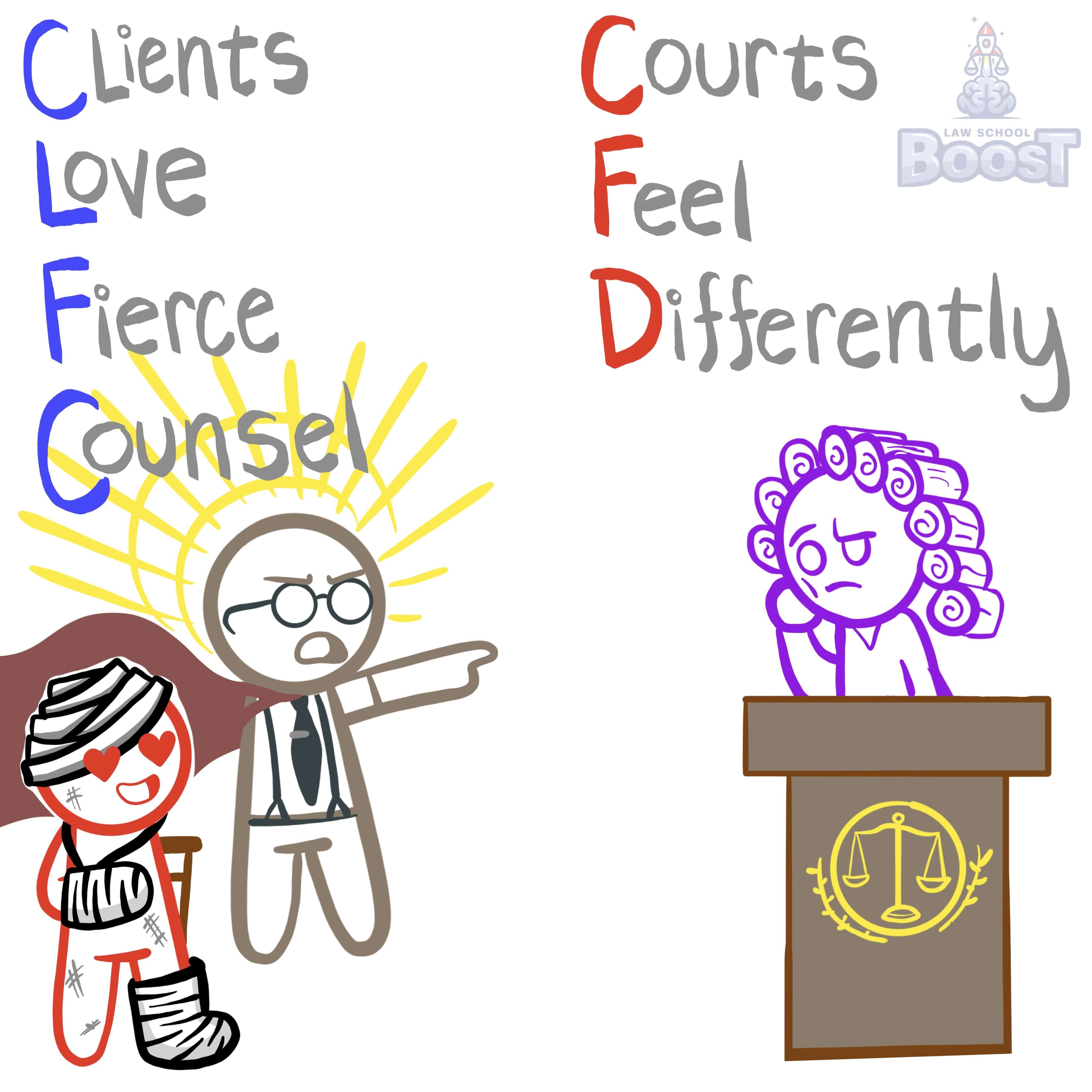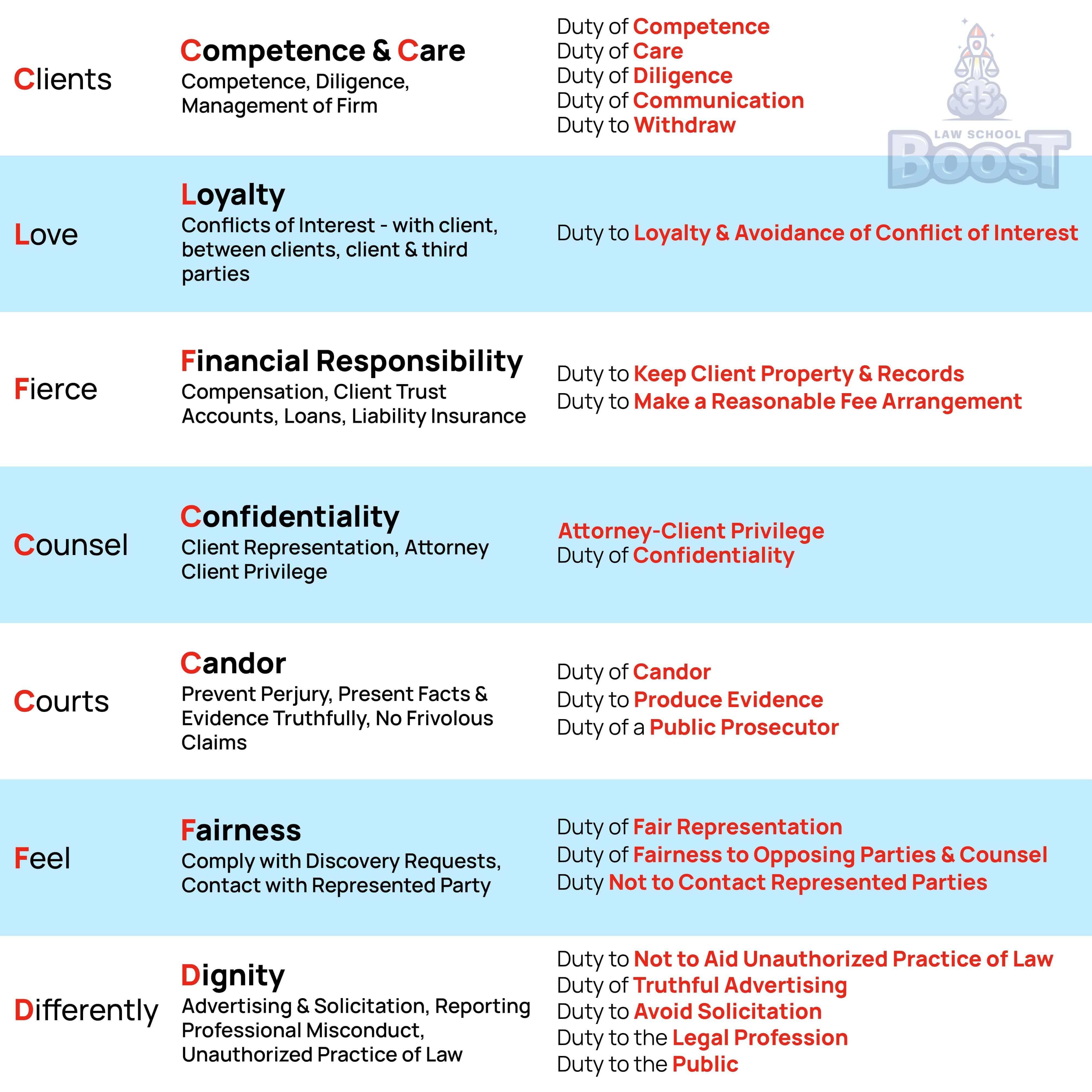‼️
Prof Responsibility • Loyalty
PR#035
Legal Definition
If a lawyer is seeking to enter an agreement with a client to limit their past malpractice, the lawyer should: (1) either withdraw or advise the client in writing to seek independent counsel and give the client an opportunity to do so; (2) advise the client that the lawyer is not advising the client as to the settlement; and (3) fully disclose in writing the terms and effect of such a settlement agreement that limits the lawyer's liability to the client. According to Rule 1.8(h)(1), if a lawyer is seeking to proactively limit liability for malpractice, the client must be independently represented by counsel.
Plain English Explanation
Lawyers, like other professionals, can sometimes make mistakes that harm their clients. This is called malpractice. While lawyers have a duty to provide competent representation, they also want to protect themselves from being sued.
For mistakes that have already happened, lawyers can settle with their clients, but the process is carefully controlled. The lawyer must step back from their normal role as an advisor. They have to tell the client, in writing, to get another lawyer's opinion. If the client doesn't want to do that, that's okay, but the lawyer has to give them a real chance to do so. The lawyer also has to make it clear that they're not giving advice about whether the settlement is a good idea or not. Finally, everything about the deal - what it means, what the client is giving up, what the lawyer is getting out of it - has to be spelled out in writing. This helps ensure the client fully understands what they're agreeing to.
For future mistakes that haven't happened yet, the rules are even stricter. If a lawyer wants to limit their liability for things that might go wrong in the future, the client absolutely must have their own separate lawyer to review and advise on that agreement. This is because agreeing to limit future liability is a much bigger deal, and the client needs someone looking out for their interests who isn't involved in the potential mistake.
For mistakes that have already happened, lawyers can settle with their clients, but the process is carefully controlled. The lawyer must step back from their normal role as an advisor. They have to tell the client, in writing, to get another lawyer's opinion. If the client doesn't want to do that, that's okay, but the lawyer has to give them a real chance to do so. The lawyer also has to make it clear that they're not giving advice about whether the settlement is a good idea or not. Finally, everything about the deal - what it means, what the client is giving up, what the lawyer is getting out of it - has to be spelled out in writing. This helps ensure the client fully understands what they're agreeing to.
For future mistakes that haven't happened yet, the rules are even stricter. If a lawyer wants to limit their liability for things that might go wrong in the future, the client absolutely must have their own separate lawyer to review and advise on that agreement. This is because agreeing to limit future liability is a much bigger deal, and the client needs someone looking out for their interests who isn't involved in the potential mistake.
Hypothetical
Hypo 1: Bob realizes he missed a critical filing deadline in Amy's case, potentially costing her thousands of dollars. He drafts a settlement agreement limiting his liability and presents it to Amy, explaining that she should probably talk to another lawyer about it. He gives her three days to decide whether to sign. Result: Bob has violated the rule. While he suggested Amy seek independent counsel, he didn't put this advice in writing, didn't provide a reasonable opportunity for her to do so, and failed to fully disclose the terms and effects of the agreement in writing.
Hypo 2: Bob makes a mistake in drafting Amy's will that could lead to future litigation. He proposes an agreement limiting his liability for any future claims related to the will. Bob requires Amy to meet with another lawyer to review the agreement before signing. Result: This approach complies with Rule 1.8(h)(2) for limiting future malpractice liability. By ensuring Amy has independent representation to review the agreement, Bob is following the proper procedure.
Hypo 3: After a significant error in Amy's contract negotiation, Bob withdraws from representing her and suggests in writing that she consult another lawyer about a potential malpractice claim. Bob waits two weeks, then sends Amy a detailed written settlement offer explaining how it would limit his liability. In the letter, Bob clearly states he is not advising Amy on whether to accept the offer. Result: Bob has complied with the rule for settling past malpractice claims. He withdrew, advised Amy in writing to seek independent counsel, gave her time to do so, clarified he wasn't advising on the settlement, and provided a written explanation of the agreement's terms and effects.
Hypo 4: Bob includes a clause in his standard retainer agreement stating that Amy agrees to limit any future malpractice claims to the amount of fees she has paid. Amy signs the agreement without consulting another lawyer. Result: This violates Rule 1.8(h)(2). An agreement limiting future malpractice liability requires that the client be independently represented. A clause in a standard retainer agreement, without separate counsel for the client, is not sufficient.
Hypo 5: After making a minor error in Amy's case, Bob verbally offers to reduce his fee by 20% if Amy agrees not to sue him for malpractice. Amy agrees on the spot. Result: This violates the rule for settling past malpractice claims. Bob failed to advise Amy in writing to seek independent counsel, didn't provide an opportunity for her to do so, didn't clarify that he wasn't advising her on the settlement, and didn't provide a written disclosure of the terms and effects of the agreement.
Hypo 2: Bob makes a mistake in drafting Amy's will that could lead to future litigation. He proposes an agreement limiting his liability for any future claims related to the will. Bob requires Amy to meet with another lawyer to review the agreement before signing. Result: This approach complies with Rule 1.8(h)(2) for limiting future malpractice liability. By ensuring Amy has independent representation to review the agreement, Bob is following the proper procedure.
Hypo 3: After a significant error in Amy's contract negotiation, Bob withdraws from representing her and suggests in writing that she consult another lawyer about a potential malpractice claim. Bob waits two weeks, then sends Amy a detailed written settlement offer explaining how it would limit his liability. In the letter, Bob clearly states he is not advising Amy on whether to accept the offer. Result: Bob has complied with the rule for settling past malpractice claims. He withdrew, advised Amy in writing to seek independent counsel, gave her time to do so, clarified he wasn't advising on the settlement, and provided a written explanation of the agreement's terms and effects.
Hypo 4: Bob includes a clause in his standard retainer agreement stating that Amy agrees to limit any future malpractice claims to the amount of fees she has paid. Amy signs the agreement without consulting another lawyer. Result: This violates Rule 1.8(h)(2). An agreement limiting future malpractice liability requires that the client be independently represented. A clause in a standard retainer agreement, without separate counsel for the client, is not sufficient.
Hypo 5: After making a minor error in Amy's case, Bob verbally offers to reduce his fee by 20% if Amy agrees not to sue him for malpractice. Amy agrees on the spot. Result: This violates the rule for settling past malpractice claims. Bob failed to advise Amy in writing to seek independent counsel, didn't provide an opportunity for her to do so, didn't clarify that he wasn't advising her on the settlement, and didn't provide a written disclosure of the terms and effects of the agreement.
Visual Aids


Related Concepts
Are lawyers allowed to have sex with their clients?
Can an attorney continue to represent a client if a conflict exists?
Does representing clients with inconsistent positions violate the lawyer's Duty of Loyalty?
How can screening avoid imputed conflicts?
How do the California rules differ from the ABA when it comes to a lawyer accepting compensation from a party other than their client?
In assessing a conflict of interest, what is a concurrent conflict?
In assessing the Duty of Loyalty, what's the difference between an actual conflict and a potential conflict?
In California, are lawyer's allowed to have sex with their clients?
In California, how can a lawyer limit their malpractice liability with a client?
In California, how must a lawyer advise their client to seek independent counsel when dealing with potential financial conflicts?
In California, may a lawyer represent an insurance company and its policyholder as joint clients?
In California, what are the restrictions related to lawyers acquiring the media rights of their clients?
In California, what are the restrictions related to lawyers receiving gifts from their clients?
In California, when may a lawyer loan money to a client?
What are some common issues that occur when a lawyer represents multiple clients in the same matter?
What are the most common types of conflicts of interest that involve a lawyer's own interest?
What are the restrictions related to lawyers acquiring the media rights of their clients?
What are the restrictions related to lawyers receiving gifts from their clients?
What is an imputed conflict and how can it be resolved?
What is required in order for a lawyer to accept compensation from a party other than their client?
What is required in order for a lawyer to avoid a financial conflict with a client?
What is the Duty of Loyalty?
When does the general rule of imputed conflicts NOT apply?
When may a lawyer appear as a witness in a matter where they represent a party?
When may a lawyer loan money to a client?
When may there be a conflict of interest with a former client?


